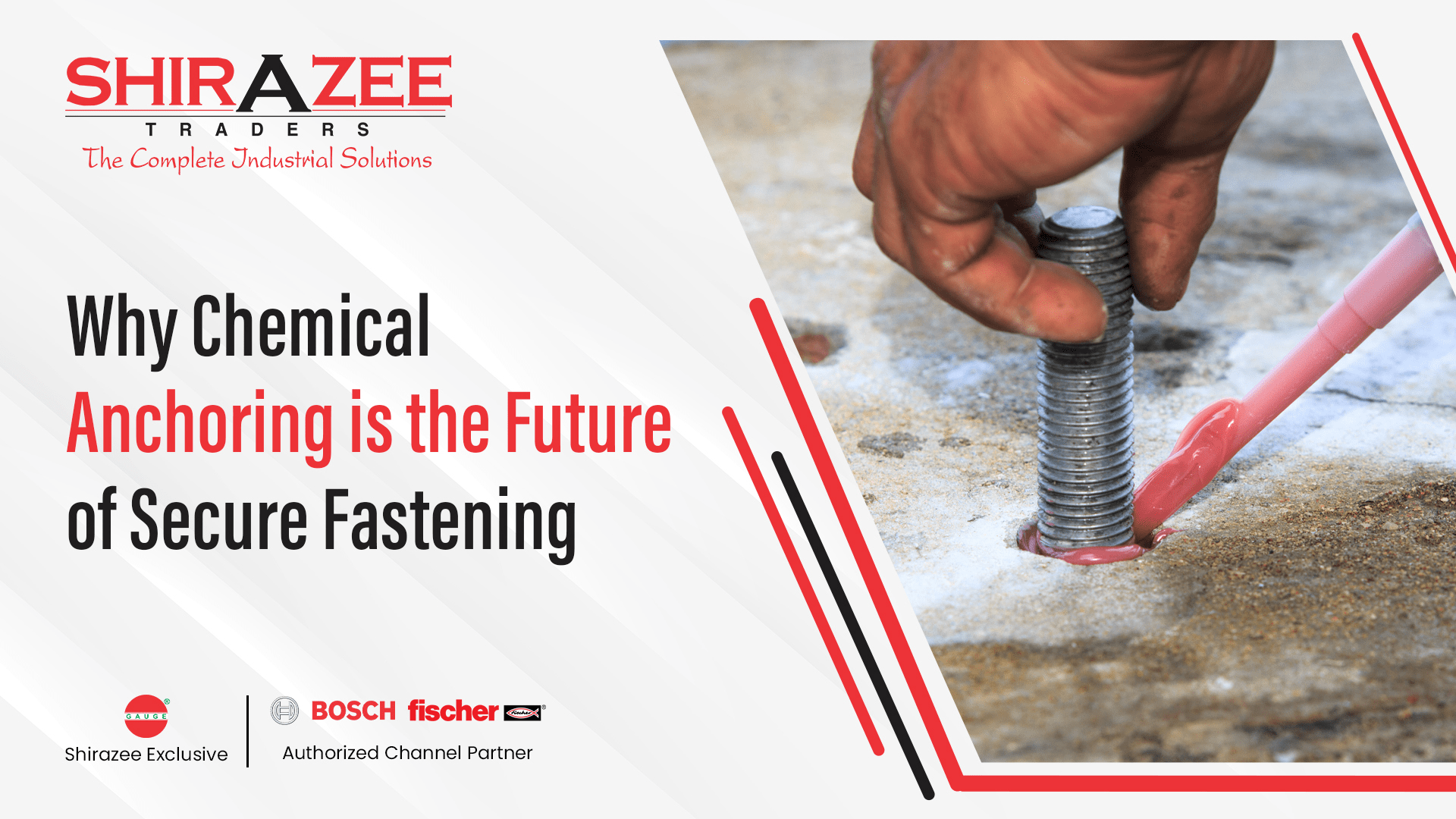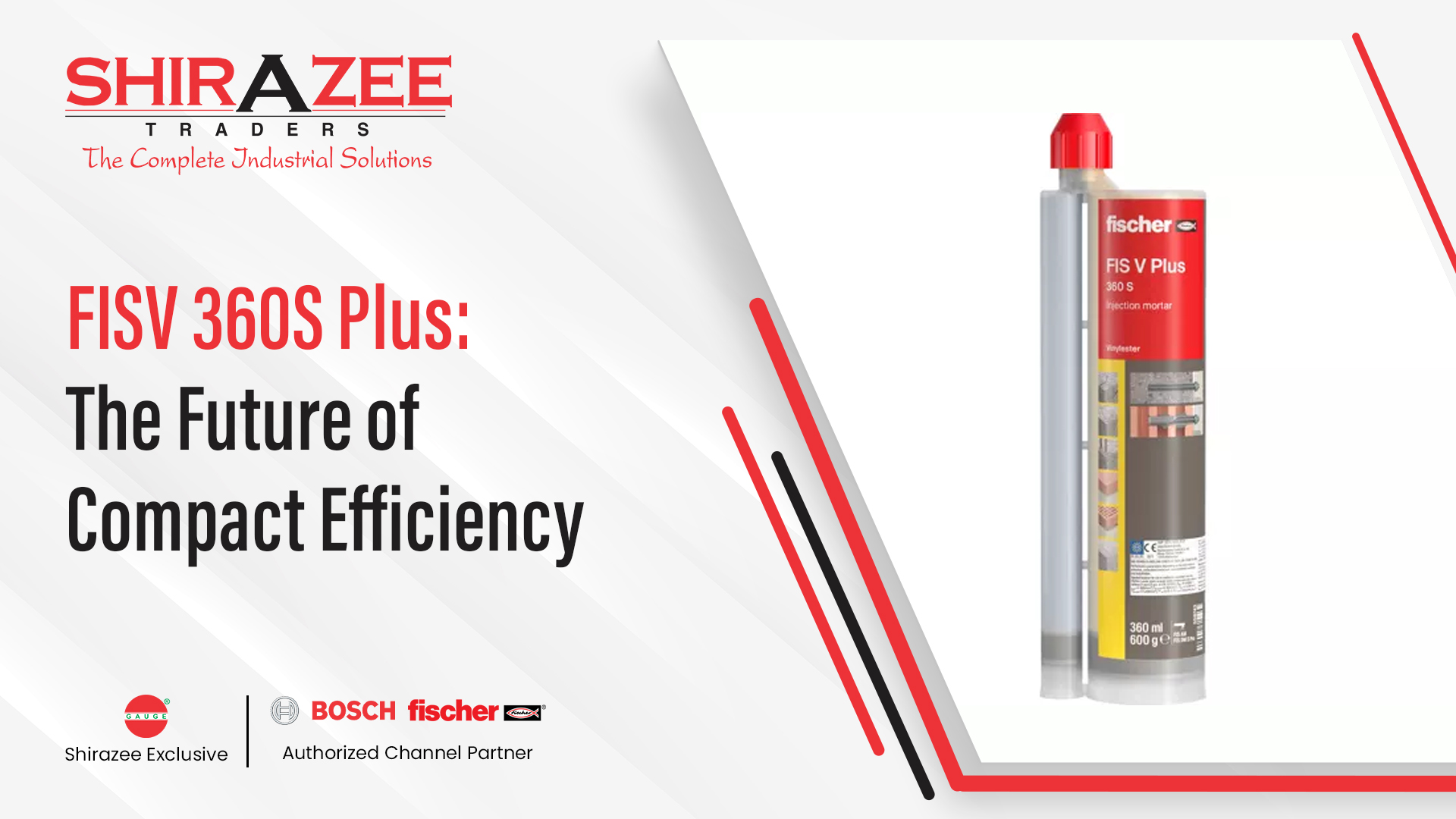
When you think of secure fastening, you probably picture bolts, nuts, and screws, right? While these traditional methods have been reliable for ages, there is a new player on the block, and it is changing the game—chemical anchoring.
This cutting-edge technique is quickly becoming the best solution for fastening in construction, manufacturing, and heavy-duty applications. Why? Because chemical anchoring offers unmatched strength, versatility, and reliability.
Whether securing fasteners in concrete, brick or even rock, it all depends on the right chemical anchoring solution. As industries evolve, so do our building, repairing, and maintaining methods.
In this blog, we will explore why chemical anchoring, particularly Fischer chemical anchoring, is the future of secure fastening and how it shapes how we approach construction projects.
What is Chemical Anchoring?
To understand the future of fastening, it is essential to grasp what chemical anchoring is all about.
Chemical anchoring uses a specifically designed glue to bond fasteners into the material, as opposed to conventional mechanical anchors that depend on expansion to secure bolts. Even in harsh conditions, stability and strength are guaranteed by the resin’s strong bond with the substrate, which is produced from epoxy, polyester, or vinyl ester.
Fischer chemical anchoring, uses premium resins that offer a strong and long-lasting anchoring solution under challenging circumstances. Compared to traditional techniques, this method provides a deeper, more consistent grasp in addition to holding power. Chemical anchoring is the ideal option whether you are working with stone, concrete, or other materials that are challenging to anchor.
Advantages of Chemical Anchoring Over Traditional Fastening Methods
When securing materials, chemical anchoring is in a league of its own. One of the primary advantages is its superior strength.
While traditional mechanical anchors may struggle in challenging conditions, Fischer chemical anchoring systems create a far stronger and more resilient bond. Deeply penetrating the base material, the resin creates a strong, long-lasting hold that can tolerate vibrations and high loads over time.
Versatility is also another important advantage. Chemical anchoring can be used on a wide range of substrates, including brick, concrete, softer stone, and even broken concrete, unlike bolts or screws that might only be suitable for certain materials. It is therefore perfect for both new construction and repair work.
Chemical anchoring is a dependable method for securing both small fixtures and heavy-duty gear. Additionally, chemical anchoring speeds up and cleans up installation by doing away with the necessity for disruptive procedures or broad hole drilling. For each project, this results in labor and time cost reductions.
Applications of Chemical Anchoring in Modern Construction
In today’s world of construction, chemical anchoring is a revolution. From large-scale infrastructure projects to small renovation jobs, the applications are endless.
One of the standout uses is in seismic-resistant structures. Chemical anchoring gives everything the strength to stay together during seismic events in earthquake-prone zones. Because of this, it is essential for building tunnels, bridges, and tall buildings.
For work including repairs and retrofits, chemical anchoring is also essential. Conventional fastening techniques are frequently inadequate when working with pre-existing structures.
In these situations, Fischer chemical anchoring systems can provide the strength to secure fasteners in older or weakened materials. Whether adding new fixtures or reinforcing weak spots, chemical anchoring helps extend the lifespan of existing structures.
Why Chemical Anchoring is a Preferred Solution in Harsh Environments
Consider where traditional anchors might fail—wet, salty, or extreme heat environments. Here is where chemical anchoring shines.
Fischer chemical anchoring products are specifically designed to withstand extreme conditions. From offshore platforms to underground construction, these systems provide a secure and lasting bond, no matter the environment.
Chemical anchoring is ideal for applications that are prone to corrosion because of its resilience. The glue used in chemical anchoring is resistant to moisture, chemicals, and temperature changes, in contrast to metal anchors that rust and deteriorate with time.
Therefore, chemical anchoring is still dependable and efficient, guaranteeing that your fasteners stay in place for years whether you’re operating in an industrial or coastal environment.
Choosing the Right Chemical Anchoring System for Your Project!
When it comes to chemical anchoring, selecting the right system is key to ensuring long-lasting, reliable results. Understanding the unique requirements of your project is crucial because not all chemical anchoring methods are created equal.
A variety of products from Fischer Chemical Anchoring are available to meet a variety of needs, ranging from typical applications to those that call for increased load-bearing capacity or resistance to particular environmental conditions.
Take the time to assess the material you are anchoring into, the load it will bear, and the environmental conditions it will face. Once you have narrowed down these factors, you can choose a Fischer chemical anchoring system that fits perfectly.
And, as an authorized channel partner of Fischer and Bosch, we are here to help guide you through this process and ensure you pick the right solution for your needs.
The Future of Secure Fastening: Why Chemical Anchoring is Here to Stay?
As construction and manufacturing industries push boundaries, the demand for more reliable and efficient fastening systems grows. Chemical anchoring, especially Fischer chemical anchoring, provides a solution that is innovative and practical, offering strength, flexibility, and ease of use.
In the coming years, chemical anchoring will likely replace traditional fastening methods in many sectors, especially as materials become more complex and environmental conditions more extreme.
Chemical anchoring has the potential to be a leader in secure fastening in the future because of its capacity to support large weights, offer long-lasting performance, and save installation times.
Summing Up!
As industries evolve and face new challenges, chemical anchoring emerges as the go-to solution for reliable and robust fastening.
Fischer chemical anchoring has indisputable benefits for everything from upgrading historic structures to large-scale infrastructure projects.
Chemical anchoring is more than simply the future, thanks to its durability, adaptability, and strength.
If you are ready to explore chemical anchoring for your next project, ensure you use the right solutions. The future of secure fastening is already here, built on innovation, strength, and reliability.







